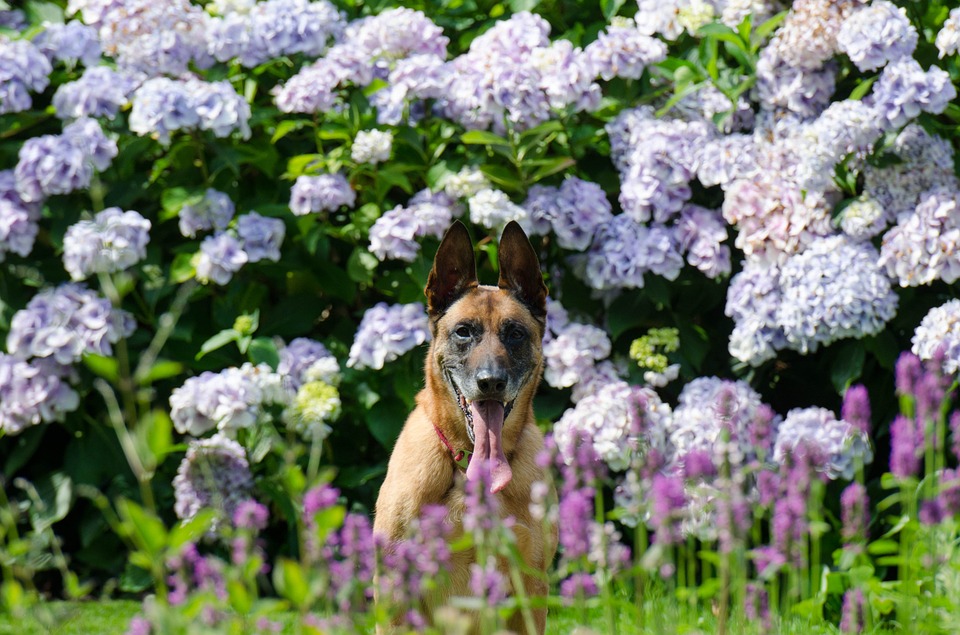There are many challenges to gardening in Central Oregon’s high desert and the last thing we think about is how are pets can be effected by the garden. The harsh climate and the short growing season make many crops unpractical here and we have to use greenhouses to help us out. Often it is the things we use to help plants grow that cause a problem and not the plants themselves.
Early flowers bring the joys of the garden. Spring is often punctuated by the tulips and daffodils that come early. Although these are hardy they are also toxic to animals if they are ingested. Tulip bulbs contain a toxin that is concentrated in the bulbs that can cause severe intestinal signs like vomiting and diarrhea. Daffodils including all narcissus species also concentrate the toxin in the bulb portion and ingestion can induce mild stomach upset to more severe cardiac problems and convulsions. Take care not to let the bulbs get eaten when replanting. Autumn or saffron crocus are also especially poisonous and can cause severe bone marrow problems. Lilies are known to be toxic only to cats. The toxin is yet to be determined but seems to take effect on the kidneys. Dogs and other pets are not affected.
Azaleas and Rhododendrons are a beautiful addition to the greenery and color of a landscape. However the bark, leaves and foliage all contain deadly toxins to certain members of the family especially livestock like llamas, goats, horses and cattle but are also toxic to cats and dogs. Yew is highly toxic to all pets and children and care should be talked in any garden situation with this plant as all parts are toxic with potentially fatal results. Foxglove has long been known to be toxic but is a great ornamental flower that grows well in gardens. All parts of the plant are dangerous containing heart stopping digitalis.
More folks are planting home vegetable gardens to promote local produce and improve the family budget. However there are some things that can be severely toxic around the cabbage patch. Onions are always a spring favorite and always grow easily in our cold climate. Often onion starts are planted with organic meals to act as natural fertilizers and pest controls. Dogs have a great nose for bone meal, blood meal and fish based fertilizers. Exercise great caution when spring planting with these natural fertilizers. They might likely entice the dogs to dig up and ingest the baby onion sets. Onions can cause severe anemia as it causes the red blood cells to break down in the bleed stream. This effect is worse in cats and is cumulative with repeated ingestion. While onions are the worst, garlic, chives, leeks and others all cause problems. Rhubarb is another great addition to the garden but the leaves are especially toxic to all animals and cause renal disease.
Tomatoes and potatoes are all a staples of any family garden. These are members of the nightshade family and many parts of the plant if consumed are poisonous. In fact, potatoes in all green stages are hazardous so even the eyes and the peels can be a problem. Don’t let the animals eat even the green or spoiled tubers and especially the peelings.
Composting is becoming more popular and is a great way to get rid of house hold organic waste. But decomposing or rotting material is one of dogs favorite treats. They love to roll in, dig up and eat rotting material. Be careful to protect pets from compost bins and do not put out meat based rubbish as it does not compost well and often turns into deadly toxins that cause food poisoning like botulism. Cocoa based mulch is another hazard that is sold in the garden stores. It has a much higher level of the Theobromine compound found in chocolate. Eating small amounts of the mulch can have deadly consequences on the liver of pets.
There is a growing tendency to use drought hardy plants and native plants to conserve water. This is great for the environment but be careful to select plants that are safe to have around your garden. A couple of native species are worth mention as they are highly poisonous and should be avoided always. Water Hemlock or Cow Parsnips often grows voluntarily in the water ditches of Central Oregon and is one of the most deadly species of plants in North America. Also a tuber known as Death Camas has a befitting name as eating one bulb can prove to be lethal while other camas species were harvested and used as food by Native Americans.
Have fun this summer with the family garden and the landscaping. Growing your own vegetables can be very fun and rewarding but be careful for your pets sake so that you do not have to have an emergency trip to your veterinarian.
If your pet gets into any suspected toxins or uncertain plants it is best to contact animal poison control at (888) 426-4435, ASPCA.org or call your veterinarian immediately. It could save their life.
Quick Reference List
TOXIC PLANTS: Tulip Bulbs, Daffodils & all Narcissus species, Autumn or Saffron Crocus,
Azaleas and Rhododendrons bark, leaves and foliage, Yew, Foxglove, Cacao plants and Cacao based garden mulch, Tomatoes and Potatoes (in any form, peels, tubers, foliage or stalks) , Rhubarb, Lilies (toxic to cats), Baby onion sets (garlic, chives and leeks also cause problems), Water Hemlock, Cow Parsnips, Death Camas.
Exercise caution when using organic meals, bone meal, blood meal and fish based fertilizers.

